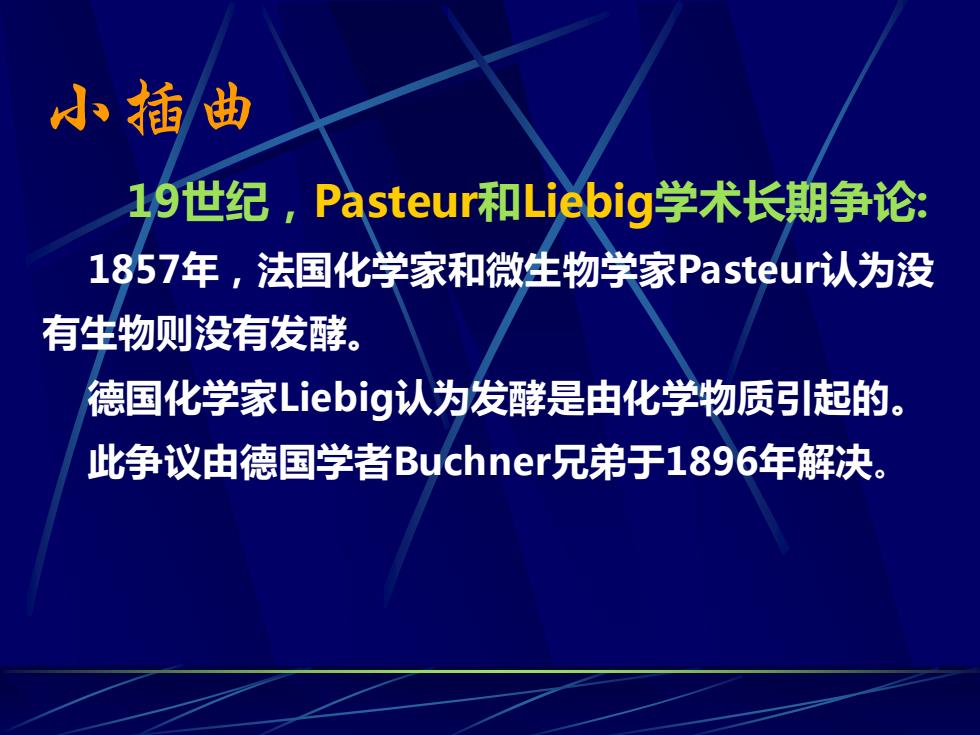
小插曲 19世纪,Pasteur和Liebig学术长期争论: 1857年,法国化学家和微生物学家Pasteur认为没 有生物则没有发酵。 德国化学家Liebig认为发酵是由化学物质引起的。 此争议由德国学者Buchner兄弟于1896年解决
小插曲 19世纪,Pasteur和Liebig学术长期争论: 1857年,法国化学家和微生物学家Pasteur认为没 有生物则没有发酵。 德国化学家Liebig认为发酵是由化学物质引起的。 此争议由德国学者Buchner兄弟于1896年解决
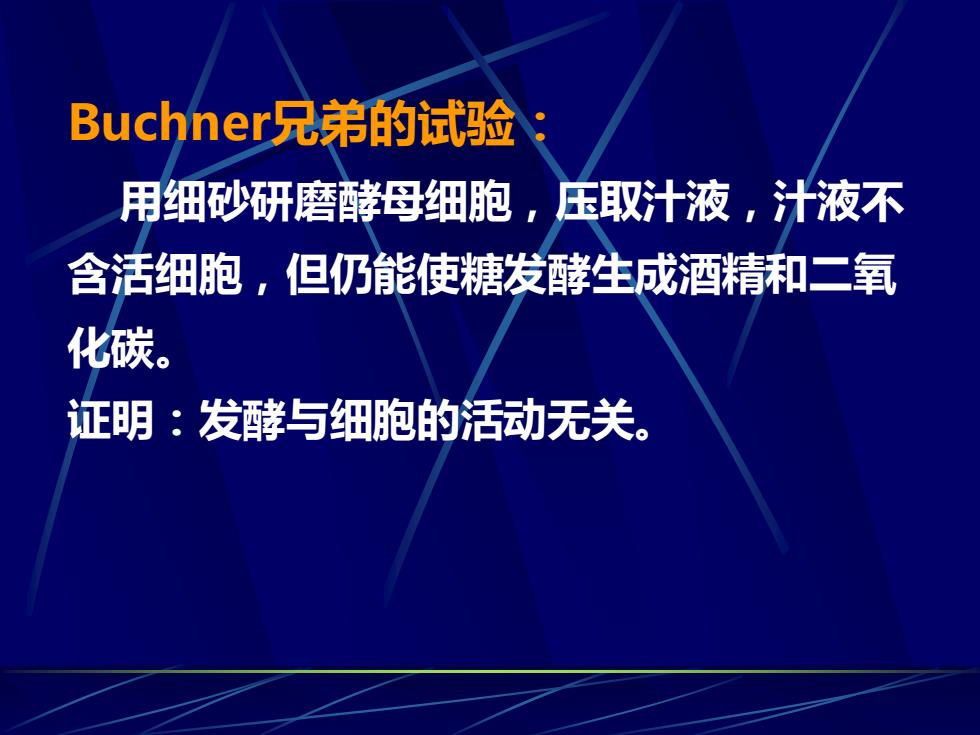
Buchner兄弟的试验: 用细砂研磨酵母细胞,压取汁液,汁液不 含活细胞,但仍能使糖发酵生成酒精和二氧 化碳。 证明:发酵与细胞的活动无关
Buchner兄弟的试验: 用细砂研磨酵母细胞,压取汁液,汁液不 含活细胞,但仍能使糖发酵生成酒精和二氧 化碳。 证明:发酵与细胞的活动无关
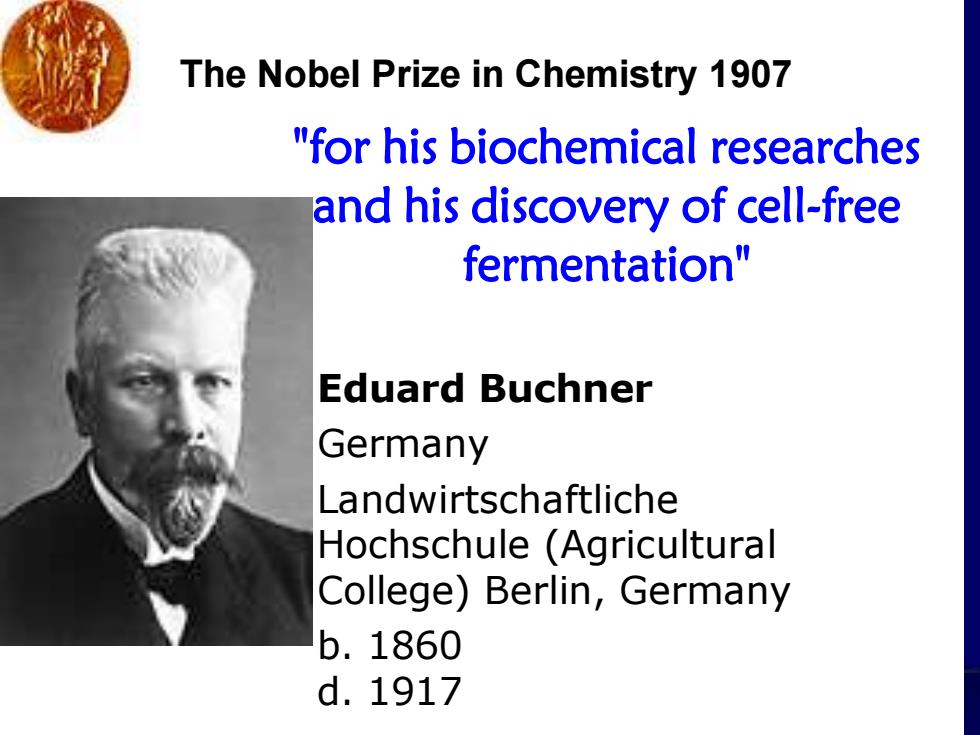
The Nobel Prize in Chemistry 1907 "for his biochemical researches and his discovery of cell-free fermentation" b. 1860 d. 1917 Landwirtschaftliche Hochschule (Agricultural College) Berlin, Germany Germany Eduard Buchner
The Nobel Prize in Chemistry 1907 "for his biochemical researches and his discovery of cell-free fermentation" b. 1860 d. 1917 Landwirtschaftliche Hochschule (Agricultural College) Berlin, Germany Germany Eduard Buchner
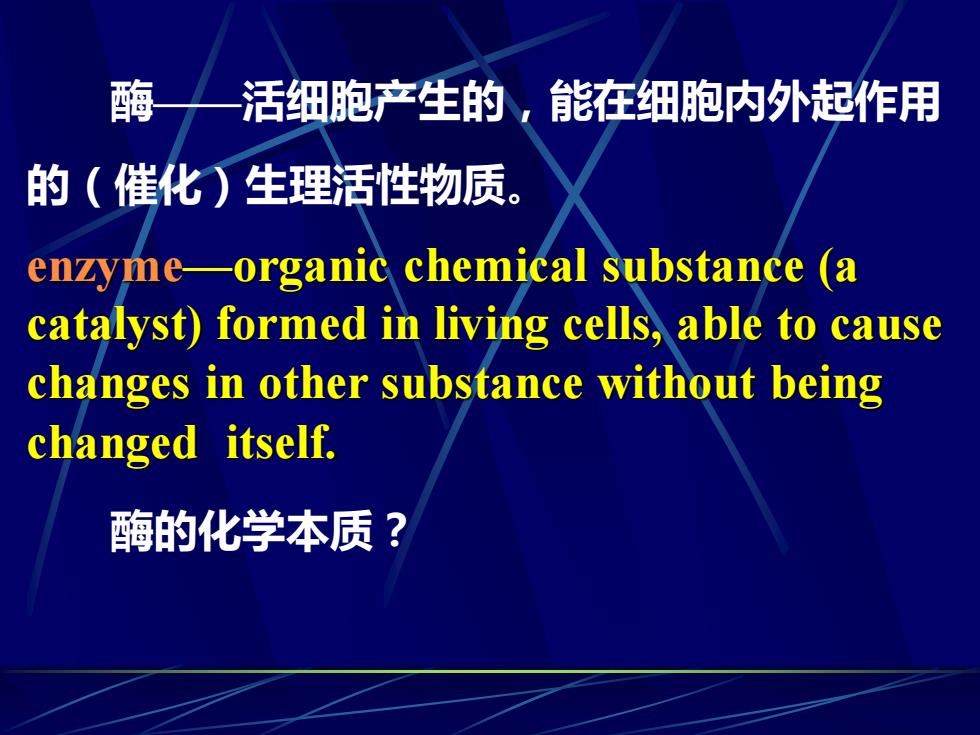
酶——活细胞产生的,能在细胞内外起作用 的(催化)生理活性物质。 enzyme—organic chemical substance (a catalyst) formed in living cells, able to cause changes in other substance without being changed itself. 酶的化学本质?
酶——活细胞产生的,能在细胞内外起作用 的(催化)生理活性物质。 enzyme—organic chemical substance (a catalyst) formed in living cells, able to cause changes in other substance without being changed itself. 酶的化学本质?
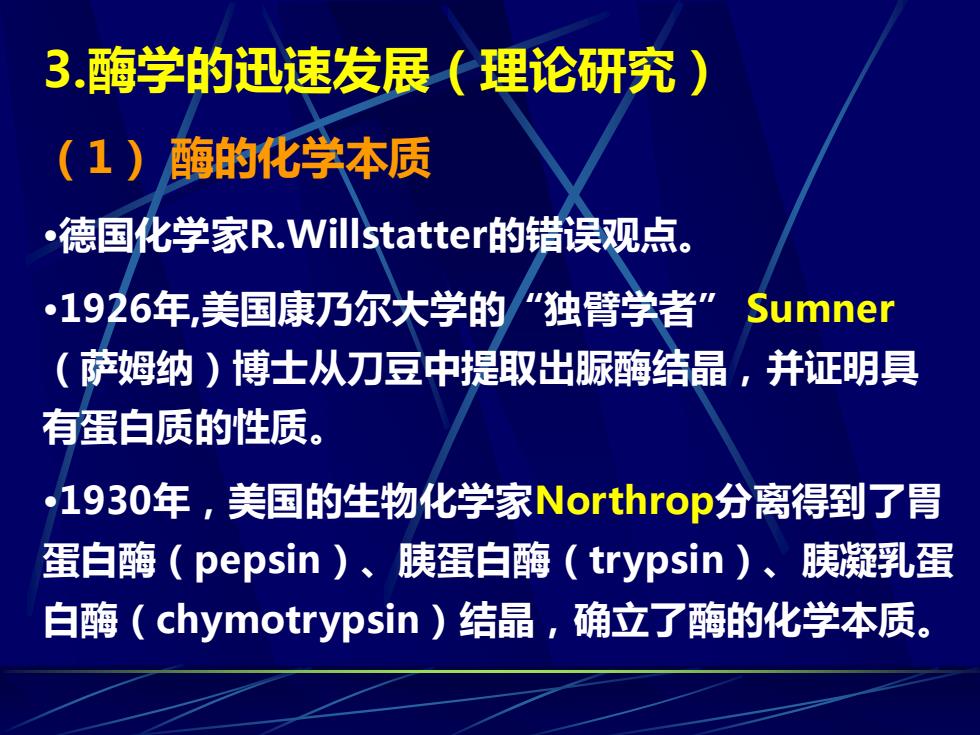
3.酶学的迅速发展(理论研究) (1) 酶的化学本质 •德国化学家R.Willstatter的错误观点。 •1926年,美国康乃尔大学的“独臂学者” Sumner (萨姆纳)博士从刀豆中提取出脲酶结晶,并证明具 有蛋白质的性质。 •1930年,美国的生物化学家Northrop分离得到了胃 蛋白酶(pepsin)、胰蛋白酶(trypsin)、胰凝乳蛋 白酶(chymotrypsin)结晶,确立了酶的化学本质
3.酶学的迅速发展(理论研究) (1) 酶的化学本质 •德国化学家R.Willstatter的错误观点。 •1926年,美国康乃尔大学的“独臂学者” Sumner (萨姆纳)博士从刀豆中提取出脲酶结晶,并证明具 有蛋白质的性质。 •1930年,美国的生物化学家Northrop分离得到了胃 蛋白酶(pepsin)、胰蛋白酶(trypsin)、胰凝乳蛋 白酶(chymotrypsin)结晶,确立了酶的化学本质